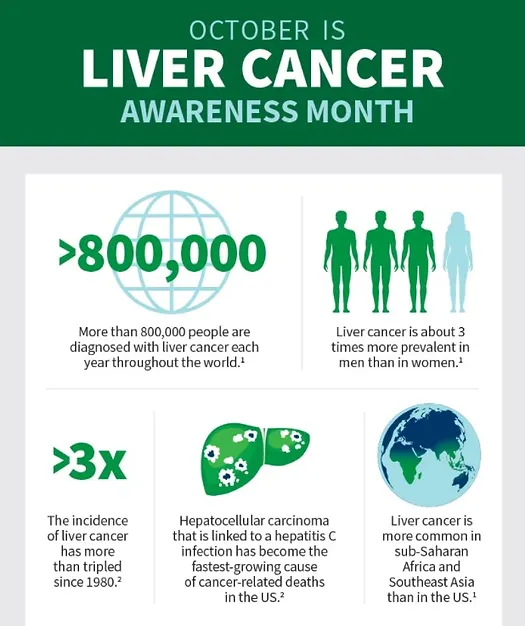
October is Liver Awareness Month!
Lifestyle Modifications for treatment of Fatty Liver Disease
Fatty liver disease is the most common liver condition in the US. It is often first detected incidentally on imaging or during evaluation for elevated liver enzymes. It is linked with obesity, diabetes and elevated cholesterol. It is sometimes called silent liver disease as it is often asymptomatic. Fatty liver is exactly how it sounds-there is a buildup of fat in the liver.
There are two basic types:
Nonalcoholic fatty liver disease (NAFLD): Fatty liver with no inflammation
Nonalcoholic steatohepatitis (NASH): inflammation associated with fatty liver
Most people with NAFLD have fat in their liver and don’t develop liver damage, while some can develop NASH. Those that do develop NASH run the risk of disease progression in which inflammation can result in fibrosis and scarring. This can result in cirrhosis which can lead to complications and even eventual liver transplant. Most patients are asymptomatic until complications develop. At that point it is uncommon to reverse these changes, so prevention and early treatment are important. There is no cure for NASH, but you can slow or possibly even reverse fibrosis.
Currently there are no FDA approved medications for fatty liver disease, though some are being studied. Weight loss and exercise are the pillars of treatment and can be effective.
It is important to understand that while alcohol can cause liver inflammation, with NASH the inflammation is related to fat on the liver, not alcohol. However, it is vital to avoid/minimize alcohol consumption to prevent further inflammation and damage. For the same reason it is recommended that individuals with fatty liver disease minimize Tylenol (acetaminophen), and certain medications as well as herbal supplements as these have the potential to cause inflammation.
Treatment
*Aimed at minimizing disease progression as much as possible.
1. If necessary, gradual weight loss is the most effective treatment. A good goal would be around 4-6 lbs. each month. Rapid weight loss is usually not long sustaining.
10% weight reduction can reduce inflammation and could reverse some of the fibrosis
Favor whole foods over processed foods: more vegetables, fruits, whole grains, beans, lentils, nuts and seeds. Think something like a Mediterranean diet
2. Exercise
Aerobic and resistance training can significantly reduce the amount of fat stored in the liver. It doesn’t not need to be complicated, but it should be challenging
Graduated program with goal of 30- 60 min sessions, 4-5 days / week
3. Avoid things that can stress, inflame or injure the liver
Certain herbal supplements and medications can harm the liver, discuss any use with your healthcare provider
Avoid alcohol consumption
Get immunizations for Hepatitis A and B
These are good topics to discuss with your healthcare provider to get a plan tailored to you
4. Improve overall health
Lifestyle changes for fatty liver can often help treatment for elevated cholesterol and diabetes and treatments for these can also help fatty liver
8-9 hours of sleep each night
Drinking up to 3 cups daily of coffee might be beneficial for liver health. Frappuccinos, added sugar and cream, as well as specialty drinks such as Mochas should be avoided
